Does “The Batman” Earn its Universe Beyond the “DCEU?”
Sonata in Darkness
It’s Raining Vengeance
Okay. So to be fair to the film The Batman I should really start talking about The Batman in my review of The Batman. It’s not fair to this production that it came into the world loaded with so much baggage—just as it’s certainly not my fault that past baggage and the recent events that add to it need to be addressed. Yet I believe The Batman rises above all this “DCEU” and #MaketheBatfleckMovie furor with one of the most stylish and yet faithful comic character adaptations laid to film. What Matt Reeves has accomplished is the truest character adaptation of Batman himself.
After the most understated logo and title card ever for a DC adaptation drenched in the movie’s signature colors of red and black, the movie starts right in with the darkness as the Riddler starts executing both his plan and his first victim. Ever since the first teaser for the film dropped and the design for Paul Dano’s Riddler in-mask was revealed along with Gotham itself, The Batman has been noted as evocative of David Fincher’s Se7en. Gotham City itself is indeed a character in this film. It is modern and grimy throughout while still intricate, grandiose, and gothic in places. Reeves’ Gotham skyline is a vast and intimidating urban landscape in a way that evokes the scale of Christopher Nolan’s Gotham City from his Dark Knight series of films, yet never gleaming with the glass of location Chicago as those films often did. This is Gotham very much a reflection of the one we witnessed in Joker, after years of accumulated desperation.
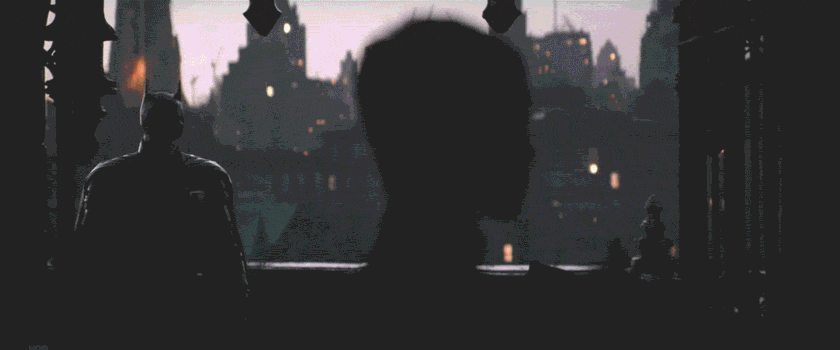
The parallels with Fincher’s masterpiece are even more apparent in The Riddler’s plans, methods, and the violence of his acts. The Batman, unlike Joker, has been rated PG-13 by the MPAA, though the film unquestionably deals with very frightening violent acts that reveal an intricate conspiracy, which Batman must unravel with genuine (if uneven) detective work. It’s definitely not stuff for kids, and the darkness of its themes and threats are extreme even for the Snyder and Nolan trilogies that preceded it. It’s actually kind of surprising what they are deftly able to get away with under the PG-13 rating here, yet this leaves some of the concessions for the rating feeling odd and out of place in this story replete with duct tape and serial murder, like the fictional addictive drug scourge of “drops” plaguing the streets of Gotham.
The film’s arc is one of redemption, however, and so it does indeed stop short of the darkness Se7en, or of the R-rated Joker in its themes. This is because we finally get to enjoy a Batman movie that is 100% unquestionably focused on the character of The Batman.
Once this new vision of The Riddler is established the film sets its sights on bringing us home with the long-running comic character of Batman with its opening monologue. Set in the second year of Bruce Wayne’s vigilante crusade against crime in Gotham, The Batman’s title character is still very street-level. We see Batman’s mysterious and fearful reputation precede him, striking fear into “dropheads” and other criminals around the shadowy city. The thematic book-ending with Todd Phillips’ film is extant during this introduction, as a gang in rough Joker-like facepaint (evoking visions of the spiritual descendants of the “Jokerz” gang from the animated Batman Beyond) is confronted mid-assault, and a half-painted recruit faces a choice.
We meet Robert Pattinson’s Batman, and his performance with his eyes and his body alone is very purposeful, readable, and powerful in concert with his costume. I really have to compliment the costume design by Glyn Dillon and David Crossman: finally… a cowl I like. One that looks fitted and practical, that enables full range of movement, that obscures the identity yet not Batman’s vision or intimidation factor. This costume has been a point of contention across the internet since the film’s release, particularly the collar. But I feel the collar is what unlocks that magnificent cowl, because it fills in the negative silhouette space established by the strong inward cut on the cowl, and this close fit of the mask is the reason it works.
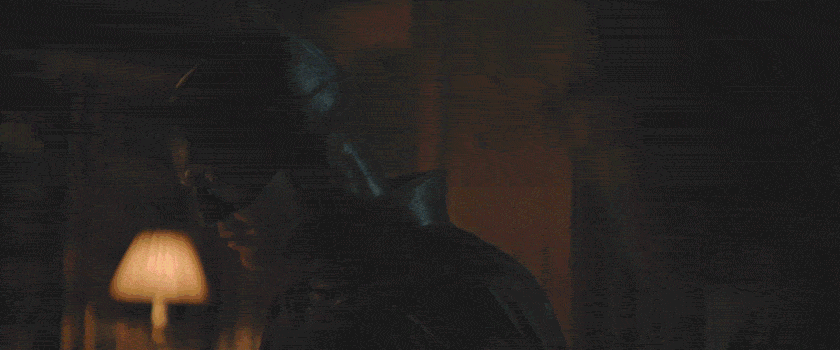
With the power of his eyes beneath this magnificent mask, Robert Pattinson brings us a new, more grounded interpretation of the character of Batman. Aided by dialogue that deftly (if overtly) grounds the character in the traumatic response to his parents murder motivating his subsequent crusade, Pattinson explores the emotional reality of the character in a way new to live-action cinema while the story deconstructs the notion of vigilantism in the face of corruption. The movie’s script accomplishes this by playing the “villains” of the film—Catwoman and Riddler—as foils to the character of Batman, dealing with many of the same traumas and motivations provided by Gotham City as it is, and making vastly different choices with them. The result is that Batman is a real, sympathetic character here much more so than the “Year One” Batman we grew acquainted with in Nolan’s Batman Begins, who was so tactical in his decisions (and costume) and so dispassionately settled on the merits of his course that there was little distance remaining for the character to travel emotionally.
Pattinson’s Bruce Wayne receives an even braver and more nuanced treatment—he is actually quite withdrawn, awkward and emotionally stunted. Batman is the person here whose monologues we hear in the film; the persona of Bruce Wayne is the mask, and this early in Batman’s story it is properly played as the most shoddily-constructed mask in the film. It’s a startlingly brave choice; “Emo Batman”—as the interpretation has been mockingly named by circles of the internet—is no mere casting accident but actually becomes a truthful interpretation of the reality of the character early in a crusade in which he’s uncertain. It’s great. It gives the character a place to go, a direction in which to develop. I spoke with my son about the actor’s take on the role and he wasn’t as impressed: he seemed to feel that this Batman was somehow diminished and less heroic. I told him my thoughts about the character’s arc having a starting place, but now I’d go even further and state that the hero’s journey in general becomes a shallow affair without an interior enemy for them to face and overcome. Bruce must learn to trust in this film, in himself and is mission and its potential, in his allies, and in the people of Gotham to in turn accept him as a hero, instead of just an agent of “Vengeance.”
This is so refreshing after previous interpretations of the character seemed to misunderstand the “mask” of Bruce Wayne: Bruce Wayne was rich, Bruce Wayne was suave, and Bruce Wayne was a gadget-using super-hero with his own special car, and so he was almost subconsciously written to ape the other successful male cinema hero icon with those traits: James Bond. But in the truest interpretations of Batman based on his long tenure in the comics, at no point should Batman enjoy his mission… and that includes his eventual cover of Bruce Wayne womanizing, partying, and appearing to be blowing his fortune on a jet-setting lifestyle. Comic book Batman also doesn’t find and bed a new romantic interest every episode (as he did in his first three cinematic outings) for which he hopes to leave behind The Mission: that’s James Bond’s tragic gig.
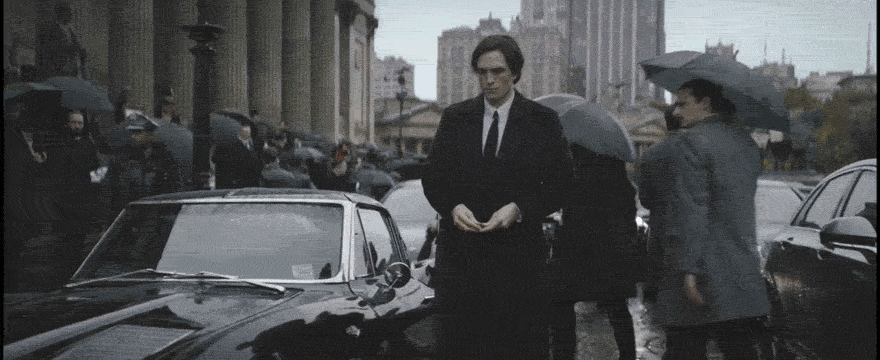
Crossing the Feline
An Im-purr-fect Murder
There is nonetheless a romantic interest in the film, in the form of Catwoman/Selina Kyle ably played by Zoë Kravitz, her second turn in the role having voiced the character for the Lego Batman Movie in 2017. In this film her reason for involvement in the story and relationship with Batman is handled in a way that is also truer to the character’s wide comic book history than any cinematic Catwoman we have seen before. Kravitz lavishes her interpretation of the character with celebrated intrigue and appeal, and her own brand of the Catwoman “swishy walk” that has been the subject of some discussion on the internet—but has long been a proud tradition in the portrayal of the character.
I think maybe the difference here with Michelle Pfeiffer’s portrayal in Tim Burton’s Batman Returns is that Kravitz’ intentionally sexy persona, like the nascent Bruce Wayne public persona, is actually part of her Selina Kyle “mask.” She wears it with the walk at the Iceberg Lounge where she works for proprietor Oswald Cobblepot, aka The Pengiun who is played with refreshing, gleeful abandon by a heavily disguised Colin Farrell. Always a cat burgler in any interpretation, she’s there to case the joint, but for personal reasons as well… that eventually reveal a disappointing, cliché, yet film noir motivation of the character. Nonetheless, as the story progresses and reveals the hidden connections between Batman’s and Catwoman’s histories, injustice sets the character on a parallel path with Batman that highlights their differences and fires their conflict.
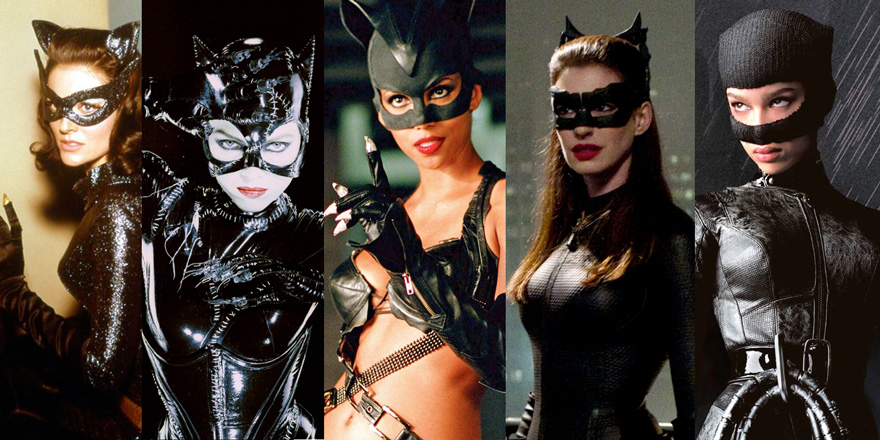
Pfeiffer’s interpretation in the much more archetypical Batman Returns, by contrast, took on a much more feminist slant. It was a departure from the comic origin, to be certain, but part of the enduring legacy of that performance was Catwoman’s enraged rebellion against all the female trappings of her smart-yet-mousy interpretation of Selina Kyle, executive assistant, killed by her curiosity uncovering the corruption of Christopher Walken’s character of Max Shreck (whom many forget was a mild satire of the 80’s public image of “ruthless business tycoon” Donald Trump). Pfeiffer’s “swishy walk” was a dangerous lure that appeared when her claws were out, but it was also her inner animal unleashed, and she relished in its freedom.
Kravitz uses her female wiles almost exclusively in the film as a tool, similarly luring her targets with her undeniable beauty. But there is no open feminist rebellion in this film at the forefront. Even as life in Gotham’s seedy underside seems exploitative, brutal, and often short for women, Catwoman’s motivations are kept personal and the scope of her distinct viewpoint on the corruption tackled in the film is thus kept limited. In many ways, she functions as a recruited female Robin in the story, though to the film’s credit the aspect of how Batman uses an assistant to achieve his aims is already one worth deconstructing. It’s an excellent portrayal of this character on Zoë Kravitz’ behalf, to be sure, probably the best and most interesting interpretation since Pfeiffer’s… just written to a different scope, in a movie that is already packed full of things to do and still trying to keep its overall focus on Batman himself.
If you were to try to shorten The Batman, Catwoman’s story-line does appear and take prominence mostly in the middle third of the film. And for the second time in a row since her unfortunate second cinematic outing starring Halle Berry, she’s not the primary focus of the story and she doesn’t have much of a viewpoint on the main antagonist’s plans. However, just as Batman wouldn’t have succeeded in the The Dark Knight Rises without the help of Anne Hathway’s more aloof and elusive Catwoman, Pattinson’s Batman only succeeds with the alliance of Kravitz’ Catwoman (in a scene that long-time Batman comics fans will recognize for the sequel story potential it presents).
Besides, if you were to remove Catwoman from this film you would have a literal sausage party, with only one other prominent speaking female in the film. Perhaps this was decided upon to accentuate the film noir atmosphere that The Batman is trying to achieve, but it wasn’t necessary. And with a beat cop named Officer Martinez interacting with Batman, despite being memorably played by Gil Perez-Abraham, I can’t help but feel an opportunity was missed to include Officer Renée Montoya from the comic and animated series mythos to fill out a few more female shoes in the film.
The second major female speaking role is a major one in terms of stature, but not in screen time and story prominence. At the end of the day, the film still could have used a few more handholds, for women like my wife to use to climb aboard.
Onward into Countless Battles
Serve the Servants
The remainder of the largely-male cast turn in fine performances in their roles. Paul Dano brings whimsical menace to the grandstanding character in a way that makes it his own, yet still acknowledges the “unsanctioned buffoonery” of Jim Carrey’s stint as The Riddler in 1995’s Batman Forever. This cinematic Riddler is the most changed from his comic origins, and his depiction in this film comes flavored with aspects of other Batman villains comics readers may recognize, like Hush, in his mask and methods, and Anarky, in his motivations. Dano plays both his voice and his character’s madness like a string instrument, with a more controlled and sustained crescendo than Carrey’s madcap Ridller. I really enjoyed his performance. Riddler’s machinations do resemble (in a PG-13 fashion) those of the antagonist from Fincher’s Se7en for the first two thirds of the film, but the final third reveals his complete plan to be also very much informed by recent events. The final twist to Riddler’s plan comes with a satisfying reveal, which also happens to be some of Dano’s best work in the film, yet comes with a drawback. So much of the film is layered with background detail that later becomes foreground plot. The world-building in the film about the nature of this Gotham is carefully crafted. So the sudden reveal of a distinct vulnerability to the city exploited in Riddler’s final plan threw me off: if it was teased earlier in the film, it was subtle enough for me to miss it on multiple views.
Jeffrey Wright brings a fresh and sobering gravity to the role of Gotham Police Lieutenant James Gordon. He quietly turns in one of the strongest performances in the film, in a role that turns out to be a crucial fulcrum for Batman’s involvement in solving the Riddler’s scheme in defiance of the law enforcement stance on vigilantism. This is the first interpretation of James Gordon that has made him black, and in this film the casting decision—even if made only on the clear merits of Wright’s abilities—introduces an interesting subtext, since Gordon is laboring for justice within a department of thick-neck career cops with deep proto-Chicago accents, whose depth of self-serving corruption is uncovered as the film progresses. Is it inappropriate or shallow of me to say that on top of the actor’s talent and work leading to his success in the role, his blackness now becomes an unexpected strength in this vision of the character? Shouldn’t Wright be able to celebrate his black identity as part of his victory in his portrayal of the character?
In the years since I last wrote about police in the context of a DC film, we have witnessed so much injustice and death. Names we should never forget: George Floyd, Eric Garner, Breonna Taylor, Elijah McClain so young here in my own “progressive” state, so many more. For sympathetic white people who didn’t already see and feel this effect in their own daily life for years, the raised consciousness spurred by the Black Lives Matter movement in response this plague of racial violence has shaken our basic faith in the heroism of law enforcement. For some, even the necessity of it.
However, following the line of internet reasoning that all policing is violent enforcement in our society deployed exclusively to protect corrupt power and entrenched financial slave-drivers is what is also driving people to absolute and uncompromising mantras like “All Cops Are Bastards” and nuance-free suggestions for change like “Defund the Police.” Behind these inflammatory slogans are often reasonable philosophies for beneficial social change in the face of undeniable rising social inequity, that never get heard or discussed because the slogans have done their job and… inflamed the matter. The Riddler in the film demonstrates this inflammation out of control: taking outrage at corruption to murderous and misanthropic extremes, blaming and targeting indiscriminately in rage and hatred, hurting far more than the people to blame. The Batman deftly explores and deplores the darker mutations of the extremism on both sides of the American false binary of Law and Order versus Social Justice; the shadow play of the film is this conflict.
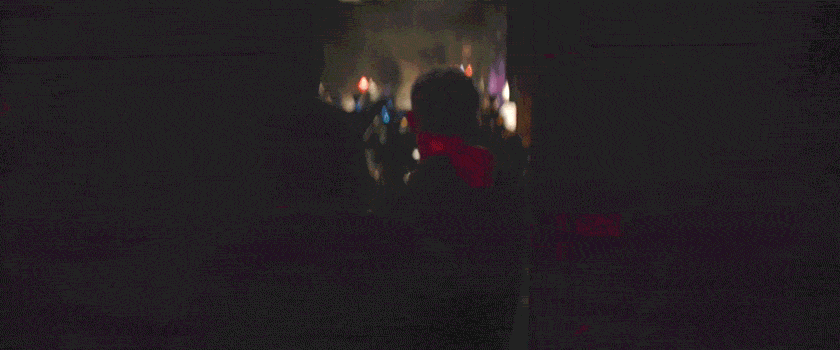
The casting of Jeffrey Wright as James Gordon, more than anything else, ensures the world of The Batman is a separate (“Elseworld?”) one from the treatments that have come before. It’s worth it. It may not be fair but I cannot imagine that, no matter how excellent of a performance J. K. Simmons might have turned in had he reprised the role for this film, the effect would have been as powerful. Yet, even if Gordon’s new role as a good black cop in a sea of white corruption becomes an asset, the effect is simply visual shorthand in a long movie. The movie never floats any racial tones to the forefront beyond the subtext of Wright’s Gordon bending the department’s rules to involve Batman and eventually reveal corruption. The Batman’s take on police is therefore both color-blind and redemptive. That’s appropriate for these volatile days when a young person once drawn to inflammatory slogans like “Defund the Police” may later find themselves grateful for the presence, efforts, and sacrifice of law enforcement in protecting the capitol of the U.S. government from an attempted fascist takeover on January 6, 2021, or the investigative efforts of the FBI in recovering stolen classified documents from the disgraced U.S president who attempted it.
The only stereotypes populating these streets of Gotham are some “Italian Mafia” classics, which were also featured in Batman: The Animated Series and were inspired by real-life mafia Chicago figures and events at the time of the invention of the character of Batman, to be fair. We see these represented by John Turturro’s chilling take on Carmine Falcone as well as by the Penguin, in a change from the character’s recent faux-aristocrat and cockney-accented Arkham interpretations. These racial overtones are the usual Coppola and Scorsese cinema mafia depictions, which I notice as the adopted son of a man born in the U.S. whose father immigrated from Italy to escape the corruption and fascism in that country that led to war.
Of course, my father would make sure I told you that he loved every Coppola and Scorsese movie he saw unconditionally, capice? They were his escapist fantasy of rebellion as he proceeded with a life of honest hard work. Despite the alluring Hollywood fantasy, if you want a review of the lawless America you would get if anyone were to really act on the new, reciprocally inflammatory slogan parroted by aggrieved Trump supporters to “Defund the FBI,” visit the Mob Museum in Las Vegas and witness the human misery due to the rise of the criminal empire of the American Italian Mafia during Prohibition, running interstate circles around limited or corrupt local law enforcement.
At this point, people no longer remember when Italians were a discriminated minority in the United States, complete with their own derogatory slur. Just as we forget widespread past racism towards the Irish, perfectly timed with their mass immigration to the U.S. due to the ecological disaster of the Irish Potato Famine. That’s a good thing; that’s progress. Discrimination can be forgotten; racism can be abandoned… if we can manage to remove the corrupt people from power who keep it alive. But when it comes to the most pernicious racism in the U.S., the reason modern progressives no longer advocate a color-blind approach is because it hasn’t worked. Failing to see color and race in the world around us has not advanced the goal of removing the power from those who fail to see anything else, and are corrupt enough to use their positions of power to advance their individual viewpoints and agendas.
Corruption itself is color-blind; people can find “what about” examples of black cops who are dirty and self-serving, and white cops who are honest and abhorred by racial profiling and racially-motivated violence. But we also can’t deny a systemic problem of racial violence with police in America, in its painfully apparent results that—thanks to the internet—we can now all see. If this kind of corruption is part of the Gotham police department, we don’t see it. Though the online response to Wright’s casting was encouragingly color-blind overall despite some predictable backlash, I’m left wondering if the film ignoring that racial subtext isn’t a missed opportunity to make a stronger statement on the plight and injustice made so clear by recent events.
For this outing, it’s enough that Wright’s thoughtful work bringing real gravity to his character’s moments of discovery cements his tent-pole performance as “one good cop” that keeps this Batman’s involvement in the police work of Gotham both relevant and believable. The progressive subtext is there to be noticed or ignored by the viewer, which presents the virtue of subtlety. It isn’t alone in this film.
Smells Like Teen Spirit
For All Your Pennyworth
Andy Serkis also turns in a fine job as Alfred, but this is probably my least favorite relationship in the film. In this case, although we do need to see this relationship having a starting place in order for it to be able to develop, Bruce trusts Alfred enough to show his true feelings with him and at times his true feelings seem strangely… immature. I know I praised this facet of the character earlier but here it went just a step too far, in a couple of instances of dialogue. Thankfully, Alfred is incredibly patient with thankless Bruce Wayne evoking visions of comic book Damian Wayne. To be clear, I have no issue with Alfred—often depicted as a veteran of the Special Air Service or other military organizations—helping out young Bruce Wayne with his detective work. I just have an issue with the way Bruce talks to Alfred. Their relationship evolves and I hope we don’t see this angsty incarnation again, as the two come to a familiar place of trust at the midpoint of the film… despite threats to the foundational legacy of the Wayne family from both within and without.
The film dips its toes into some of the more progressive (and transgressive?) Batman notions: the conviction of the elder Waynes as somehow complicit in crime, and possibly their own deaths. Joker played around with these themes a bit as well. Progressive viewpoint on society—perhaps not inaccurately—demands that any great wealth accumulation must be painted with the taint of exploitation and corruption. In 1992’s Batman Returns, this is what Max Schreck was for, in sacrificial place of the modern Wayne family. Other Batman media, like the Telltale Batman games, dive into this idea too completely, essentially robbing Bruce Wayne of the motivation to take any sort of vengeance over the injustice of his parents’ murder because they had no innocence and their murder no injustice—leaving the character mindlessly aping the role of Batman for… reasons.The Batman dips its toe in this territory but only just so, leaving the Waynes with a minor character stain. The reveal of the methods for corrupting the city becomes a half-measure of “the sins of the father” that dodges any specifics about the culpability of any of the Waynes, including Bruce, for the situation. Therefore the entire plot thread winds up a half-development, were it not for its effect advancing the trusting relationship between Bruce and Alfred.
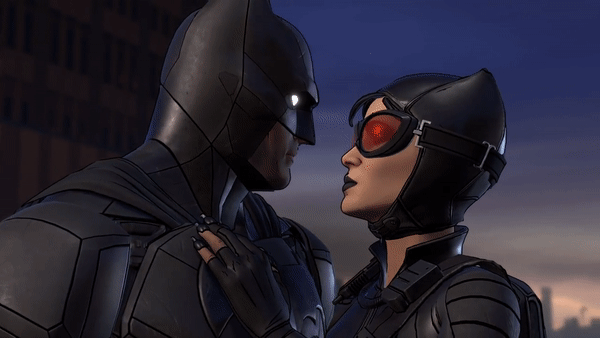
This is movie Batman, after all. Twenty years ago we were watching Arnold Schwarzenegger and Uma Thurman hamming it up in a cheesy interpretation with cars driving up buildings and bat nipples and real clear good versus evil notions… to sell Happy Meals, with no deep ideas at play at all. I feel it’s important to recognize incremental progression in the deepening of super-hero popcorn movies, is it not?
With Batman, it will always and forever be a dead end to take a thoughtful socio-economic interpretation of the character directed towards absolute progressive ideals that are heroic in noble intent while simultaneously too absolute for actual reality: crime is exclusively caused by poverty, socio-economic disparity, and improperly addressed mental illness; anyone with a vast accumulation of wealth must themselves be a crook or the benefactor of a crook; all cops are corrupt because they prop up a corrupt socio-economic system that protects and maintains the disparity and poverty and neglect that generates crime in a self-perpetuating loop. In the world of Batman, these views taken too far into extremist territory just make you a progressive supervillain like Anarky, or this movie’s interpretation of the Riddler.
It becomes the methods you are willing to employ, and not the idealistic ethos, that determines Batman’s stance towards you. The moment you are willing to enact violence—to unleash violence in a way that would hurt the innocent citizens of Gotham City, and possibly create another orphan weeping over the corpses of his parents who may be dead for no reason or for reasons the child can’t yet know—you wind up on Batman’s list. Take Batman’s Law and Order stance far enough (say, have Frank Miller write the book) and Batman is practically a reactionary icon… and if you want a heaping helping of where that goes unfettered by concern about violent methods you can of course spend some time with Rorschach’s journal in the world of the Watchmen.
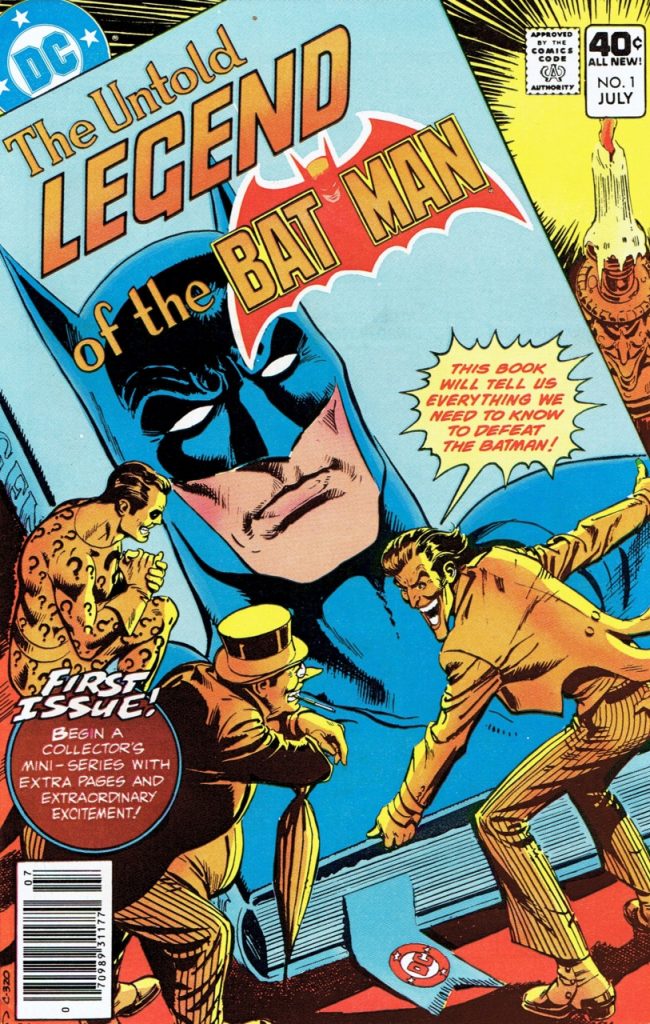
Still, I prefer a random street mugging to be the crime of Batman’s origin because no matter how we improve our society to address poverty and inequity, random violent crime will continue to create victims. I believe the presence of greed, envy, jealousy, and other dark aspects of our nature that lead some to crime are an inextricable part of human nature, that can become exasperated and widespread due to desperation, but are not born from it. The film straddles these philosophical lines, as does this Bruce Wayne himself: with the police, with his position and culpability in the society that is Gotham, with where to go in the future after the crisis of violent extremism has passed. We may live in a new world now where every armchair pundit has the answer to all of society’s problems, but if your answer includes violence that will impact innocents, Batman will be there to stop you.
That’s always been Batman, even movie Batman. It was a key theme in the Nolan movies, which always played the villains as charlatans using social justice as a deceptive platform from which to launch their “wipe the slate clean” secret extremist agenda. This movie hits very much the same notes, but again progresses the thematic conversation, book-ending Joker by establishing legitimacy behind the accusations of widespread corruption that eventually feed the “burn it all down” final solution of the Riddler.
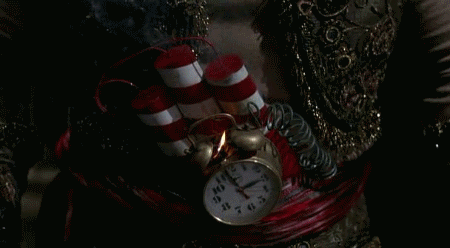
We also have the return of a decidedly non-lethal Batman. It’s core to the theme of the film, and a welcome return after Snyder’s work in Batman V Superman: Dawn of Justice opened with a treatment of Batman whom many felt was cavalier about lost human life for which he may be responsible. Zack Snyder is a director I’ve often defended in retrospect, but he didn’t help matters with his public quote on the subject:
“Someone says to me: Batman killed a guy. I’m like, Fuck, really? Wake the fuck up,” Snyder said. “I guess that’s what I’m saying. Once you lost your virginity to this fucking movie and then you come and say to me something about like ‘my superhero wouldn’t do that.’ I’m like ‘Are you serious?’ I’m like down the fucking road on that. It’s a cool point of view to be like ‘my heroes are innocent’…That’s cool. But you’re living in a fucking dream world.”
comicbook.com – Zack Snyder Comments on Having Batman Kill in ‘Batman v Superman: Dawn of Justice’ By Jamie Lovett – March 28, 2019
There may be several ways to take this quote, depending on your inclinations towards or against Snyder’s work, but it’s hard to take it very charitably… and it has been used to argue that Snyder lacked understanding of these DC characters on a very basic level. I’d argue, as I have before, that the cynical Batman we see in Batman V Superman: Dawn of Justice was intentionally an extreme decision that gave that interpretation of the character a starting place in his arc and thus a place to go. Ben Affleck’s Batman in that film explores the same arc as Pattinson’s in this one: a mournful ascent from self-righteousness and vengeance to healing and heroism. Both interpretations start their change-motions in an out-of-character place, and move via the events of the story towards the hero version of Batman with which readers are familiar. This story arc works better in The Batman partly because it is the primary arc and focus of the film given appropriate focus in a solo Batman film, with a run-time longer than that of the theatrical cut of Batman V Superman, which was burdened by world-building so much that it was, as Jeremy Iron’s delightfully understates it, “sort of overstuffed.”
It also works better because this Batman’s starting point here is less blood-soaked, though just as focused on trauma.
There is an argument to be made that as movies adapt these characters from the fantasy of the drawn page of comics to a cinematic reality, that there may be a responsibility to depict the real world consequences of violence as well. With violence in our world, it’s not uncommon for a single punch to end someone’s life. Comic book films are therefore presented with the unenviable choice of either depicting comic book heroes as deciding to use real world violence and therefore accepting at least the possibility of ending a human life, or depicting real world violence is such a way that it never presents the possible fatal real world consequences of that violence. We see that second choice all the time, as characters in Marvel Studios and other films regularly take bullets in the shoulder and turn around and use the affected arm later in the same film, rather than spending the remainder of the runtime in surgery, recovery, and exhaustive and slow physical therapy to regain use of the limb.
Still, Pattinson’s Batman may not be entirely non-lethal, as a thrilling Batmobile sequence culminates in an explosive climax.
Escaped Crusader
Highway to the Anger Zone
The Batmobile in The Batman is a sleek and powerful armored muscle car in this film, but still unmistakably a car; I loved the design almost as much as the cowl. And the Batmobile scene in this movie is hands down the best use of the vehicle in any Batman movie; it’s an actual high-speed chase scene, almost classic in how it evokes the spirit of films like The French Connection. These are all wonderful, intentional choices by Reeves and the production designer James Chinlund, as quoted in an interview with Variety, where he emphasizes the need to differentiate from cinema’s original tricked-out-automobile-using super-spy:
“It wasn’t going to be like a tank or a specialized weapon,” Chinlund explains. Rather, the notion was that Bruce Wayne had built the car himself, turning his back on Wayne Industries. “He was not James Bond, he was a singular vigilante.”
Variety – “‘The Batman’ Production Designer on Building the Batmobile as a ‘Relentless’ Hunter” by Jazz Tangcay
The Batmobile sequence in the film is the best executed in any cinematic Batman, and it is again the vulnerability of this interpretation that provides the thrills and uncertainty in the scene. The Batman smartly focuses on the grungy (no Nirvana pun intended here), self-made nature of this vigilante who is enabled by his inherited money, but isn’t somehow secretly finagling his company into manufacturing proto-military vehicles for him to unleash against common criminals. This self-made aesthetic extends to the “Batcave” and the costume as well.
Leading up to the release of this movie, reveals of the new Batman’s costume prompted focus on the comic-based, esoteric speculation that the bat emblem in his chest was made up of the gun that took his parents life. In fact, as CBR reveals in an article describing a now-removed promotional video, the symbol is revealed to simply house a tactical knife. It’s an expression of this Batman’s individual, self-made “prep time” more than it is of “Emo Batman,” to my relief. Nonetheless this emblem part of the suit design being an “accidental logo” is unclear; it didn’t really work for me.
The bulletproof nature of the Batman’s outfit irritated me, as well. I’ve placed a lot of praise on this film for its themes, characterization, and story. But if there is a place this film underperforms compared to its predecessor it is in the action. Batman’s armor is fully bulletproof, something we’ve seen executed in the comics dating (to my knowledge) dating back to the post-Knightfall era. But as a result the movie robs the danger of guns from the world of Batman; a world of a vigilante that was literally formed by random gun violence. It makes sense to make the rich victim of gun violence in his youth devote his resources to nullifying that threat. But the way high powered ordinance bounces off this very-human hero without incapacitating him from impact is hard to swallow, and it sticks in the throat after the Nolan trilogy showed us Lucius Fox presenting bullet-reflecting technology to Christian Bale’s vigilante. Bruce Wayne in The Dark Knight rejected the tech due to the possibility of collateral damage to bystanders. To be fair, Batman has sported bulletproof armor in all his latest cinematic outings.
But in the world of The Batman, bullets just evaporate when they hit Batman.
That’s Superman’s gig. Maybe it’s because it’s been nearly a full decade since our last Superman movie, but I couldn’t shake the feeling that The Batman had a little bit of Superman envy in it, featuring a hero who can stride confidently into a hail of bullets. It doesn’t fit here. The Bulletproof Batman also has the ghost of Kal-El haunting him with a “First Flight” scene only Superman could have walked away from.

The end result is that, except for the Batmobile sequence, the action sequences in The Batman too often rely on the spectacle of bullets sparkling off armor to replace the articulation and effort that would be required to see comic Batman as we have known him—dodging and avoiding that assault with his bevy of belt-based tricks. The greatest fight sequence in The Batman doesn’t supercede the greatest Batman fight sequence in Batman V Superman in pure action choreography. If that matters to you. It matters to me sometimes, but it sometimes doesn’t matter to me. Joker had nothing comparing to either film in terms of action, because it was a very different film going for a very different effect. The Batman is going for a venne diagram of the dark contemplation of society that is Joker, and the hopeful heroics of the modern hero movie. But its share of one circle of interest sometimes contradicts its share of the other; a realistic contemplation on violence is diminished because Batman himself is strangely indestructible.
It’s clear to me that fight and action sequences matter more to comic book movie fans than to mainstream movie fans. But the fact remains; if Reeves wants to be responsible for the perfect Batman movie, he needs to nail these scenes as well. Nonetheless, the final climax of the film presents a set piece and an action sequence that rivals Snyder’s work in this area, and surpasses everything that Christopher Nolan has done with the character’s signature abilities in martial arts and personal combat.
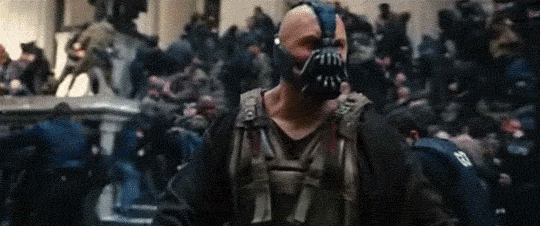
You Know You’re Right
All’s Well That Ends Farewell
The final conflict of the film is thrilling and satisfying, and it’s welcome focus is Batman springing into action in a way he hasn’t before to save lives. There are several key moments of heroism specifically featured here, and although their overtones can come across as mildly maudlin with just a smidgen of unearned sentimentality, when all the elements assemble at the end highlighting and vindicating the movie’s primary black and red color scheme… the overall effect is indeed grand and inspiring.
The Batman then features an extended denouement, like each of Nolan’s trilogy of movies. I didn’t appreciate it much. I can understand that Reeves has painted an epic world here, and an epic tale features an epic close that show you all effects of the grand plot on the future direction of all the key characters. I truthfully found myself a bit exhausted at this point, when taking in the film in a single viewing in a theater. Emotionally spent, The Batman leads the pack in the recent DC adaptations but stumbles across its finish line in slowing steps that feature a closing monologue from Pattinson’s Batman that states the moral of the story too overtly, an unwelcome tease of a future super-villain that seems premature, and the kind of Long Goodbye that true film noir movies are entitled to enjoy after their quick back-alley knife-stab of a plot is resolved.
This is a shame because in scene after scene, Reeves justifies the sometimes languid and contemplative eye of his camera with the wisdom to cut a scene leaving you thirsting for more in the edit. The pace of the film is never slow; it’s just so “overstuffed” that the movie overall doesn’t demonstrate the wisdom to exit quickly, thereby leaving the audience wanting more. I do want more. And I will get it. But when I think back on the more iconic power evoked by the apocalyptic ending of this movie’s companion book-end Joker, and how that film evoked an emotional crescendo and a state of social panic in the audience and left them there, I feel like an incredible opportunity was lost in constructing a similar crescendo the ending of this film. I think if the movie had cut to credits in the moment I mentioned before, when the black and red color scheme is revealed to have a diagetic source in the story—in what amounts to both the climax of the film and the ascension of a vigilante into the role of a hero—the bravery and power of that choice might have elevated this film as a work of art.
But this film was always, in its aims and designs, more of a “comic book movie” than Joker. The impact of the social statements made by The Batman fade away as the characters wrap up their individual stories. And even as its denouement does much to mute that socio-political emotional crescendo via vivisection, returning us to the world of comic book Batman is a safe an reasonably forward-looking move. Yet… the Arkham Asylum tease at the end of the film was a step too far for me, and struck me as unnecessary, puzzling, and limiting. A Batman movie featuring the Riddler as antagonist ought to know to leave a few more question marks at the end of its sentences. Nonetheless, The Batman succeeds despite staying too long at its own party.
The Batman is a purposeful acrobat, dancing deftly around volatile political topics as it paints the truest portrait of the comic book character of Batman. Although it may not apply a lot of force to move these grand ideas in any direction, it has to be appreciated for reviving the hero of Batman for young audiences by confronting the themes of the modern world and—like Joker—bringing more despondent noir to those audiences than they would have seen otherwise. Nightmare Alley bombed, after all.
It was also very good, but probably too long as well.
Advertisement

